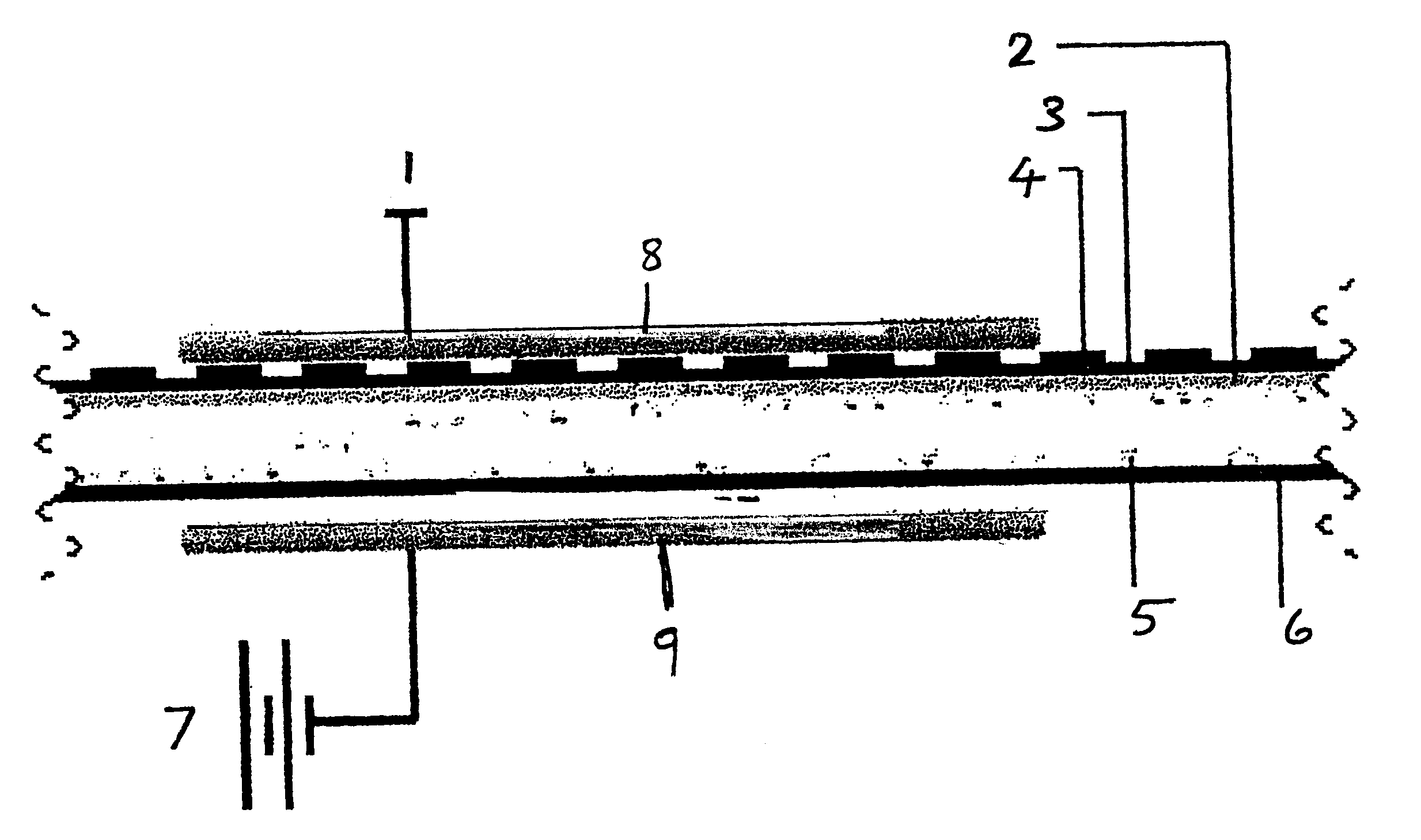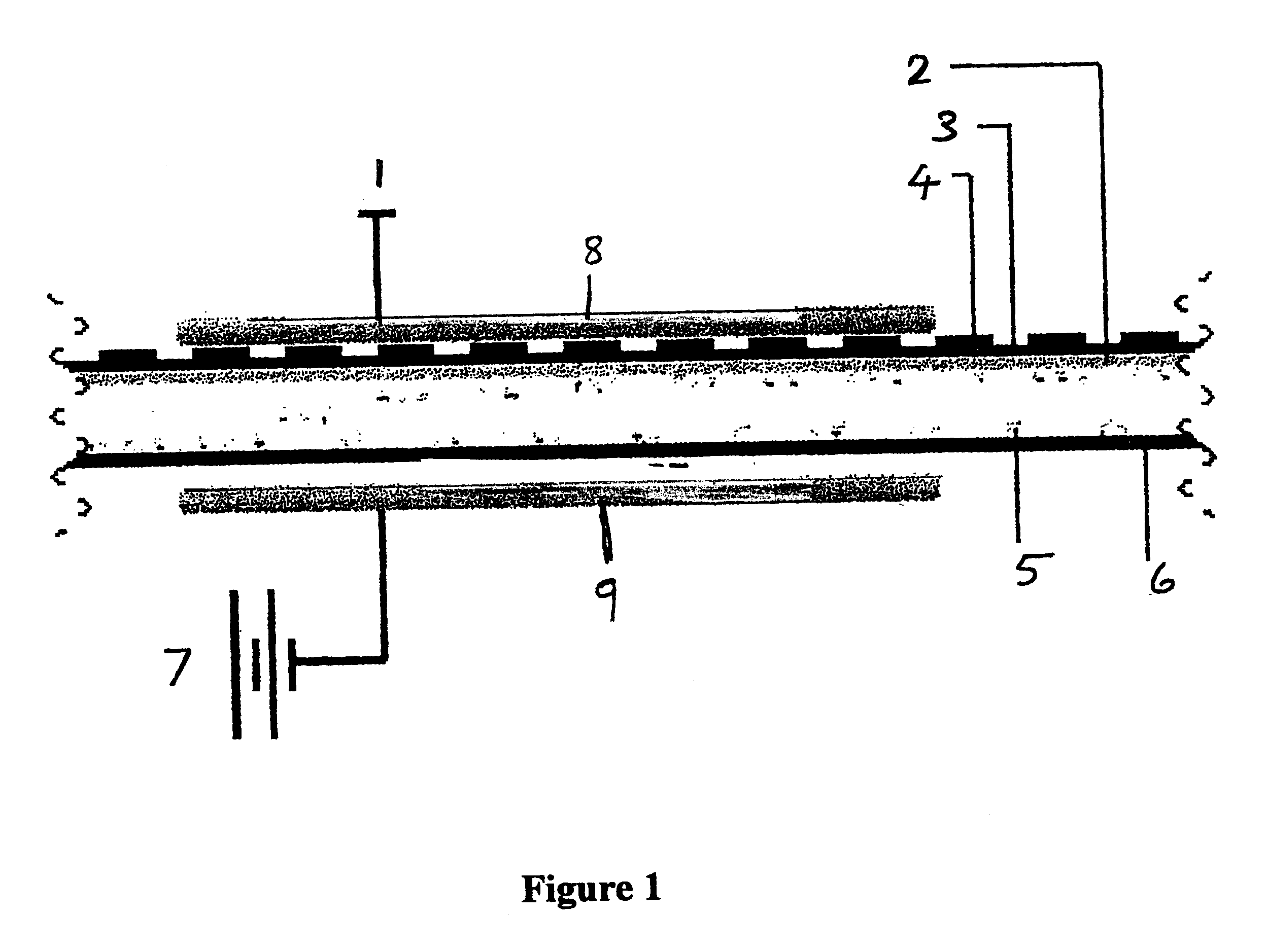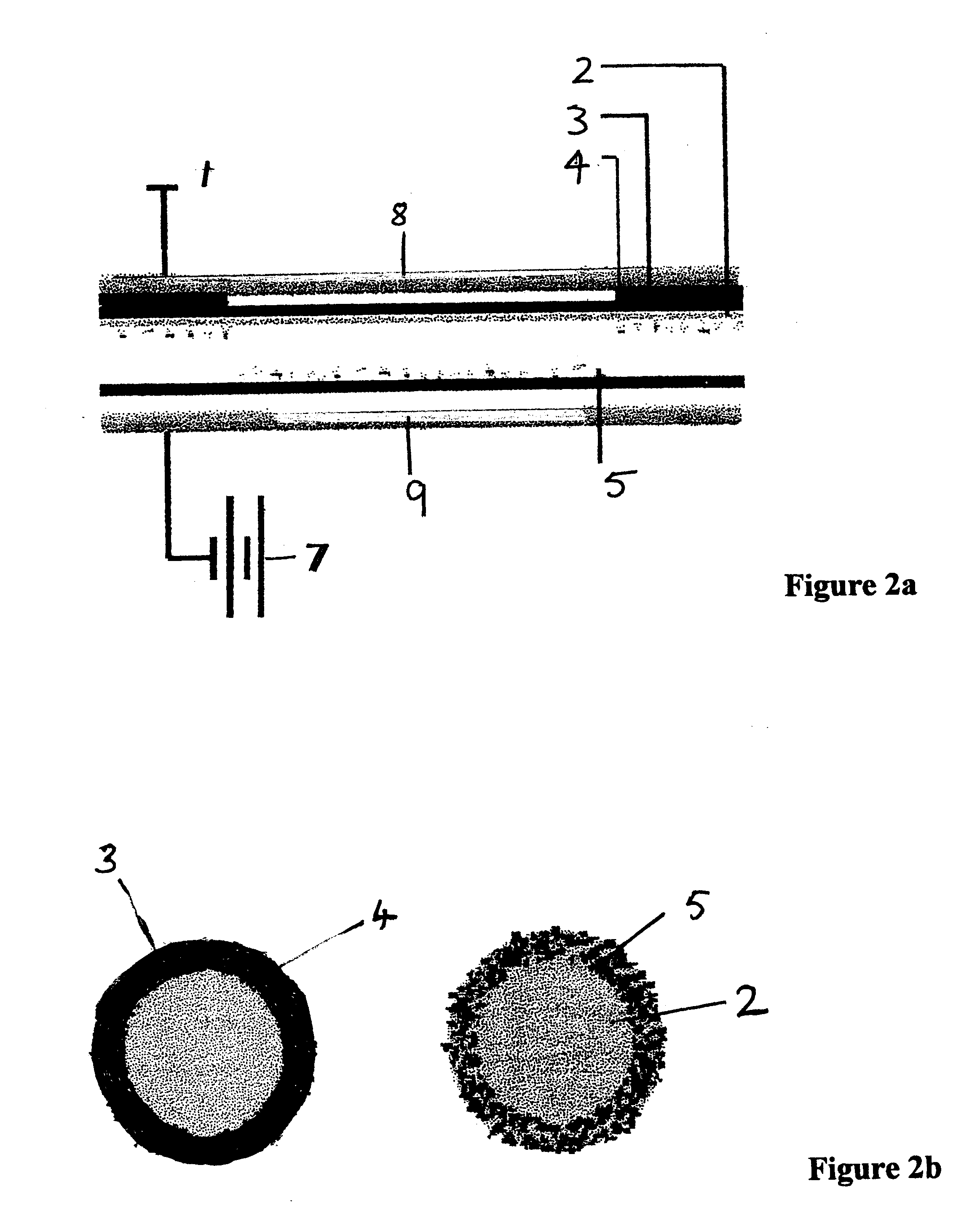Production of patterned coated abrasive surfaces
a technology of patterned coating and abrasives, which is applied in the direction of grinding devices, manufacturing tools, coatings, etc., can solve the problems of not necessarily crisp definition of each element of the pattern, and achieve the effect of less intense local variation of the field, less clear definition of the desired pattern, and enhanced deposition
- Summary
- Abstract
- Description
- Claims
- Application Information
AI Technical Summary
Benefits of technology
Problems solved by technology
Method used
Image
Examples
example 1
In this Example we illustrate the results of the use of a process according to the invention. The apparatus used is as illustrated in FIG. 3 except that the grounded electrode was a flat electrode in place of the ring electrode illustrated in the drawing. The live ring electrode had an outside diameter of 20.32 cm., a radial width of 4.45 cm. A vulcanized fiber backing material coated with a pressure sensitive adhesive, (used as a substitute for the uncured maker coat that would be used in a commercial operation), was attached to the grounded electrode. The separation between the backing material and the live electrode was 1.11 cm. A tray of abrasive grain was placed between the electrodes adjacent the live electrode which was then connected to a 10-30 kV DC power supply. The pattern of deposition is illustrated by the scanned images presented as FIG. 7 which shows three discs coated in this manner with differing times of deposition. They show a clear pattern of deposition in the pr...
PUM
| Property | Measurement | Unit |
|---|---|---|
| diameter | aaaaa | aaaaa |
| diameter | aaaaa | aaaaa |
| conductive | aaaaa | aaaaa |
Abstract
Description
Claims
Application Information
 Login to View More
Login to View More - R&D
- Intellectual Property
- Life Sciences
- Materials
- Tech Scout
- Unparalleled Data Quality
- Higher Quality Content
- 60% Fewer Hallucinations
Browse by: Latest US Patents, China's latest patents, Technical Efficacy Thesaurus, Application Domain, Technology Topic, Popular Technical Reports.
© 2025 PatSnap. All rights reserved.Legal|Privacy policy|Modern Slavery Act Transparency Statement|Sitemap|About US| Contact US: help@patsnap.com



